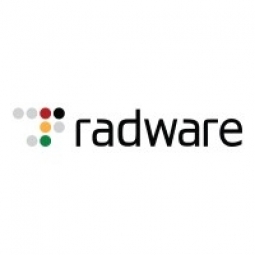Customer Company Size
Large Corporate
Region
- America
Country
- United States
Product
- Radware's LinkProof
Tech Stack
- Multi-WAN load balancing
Implementation Scale
- Enterprise-wide Deployment
Impact Metrics
- Customer Satisfaction
- Productivity Improvements
Technology Category
- Networks & Connectivity - Network Management & Analysis Software
Applicable Industries
- Education
Applicable Functions
- Business Operation
Use Cases
- Remote Collaboration
- Remote Control
Services
- System Integration
About The Customer
Founded in 1891, New York Law School is an independent law school located in lower Manhattan near the city’s centers of law, government, and finance. New York Law School’s renowned faculty of prolific scholars has built the School’s strength in such areas as constitutional law, civil and human rights, labor and employment law, media and information law, urban legal studies, international and comparative law, and a number of interdisciplinary fields. The School is noted for its eight academic centers: Center on Business Law & Policy, Center on Financial Services Law, Center for International Law, Center for New York City Law, Center for Professional Values and Practice, Center for Real Estate Studies, Institute for Information Law & Policy, and Justice Action Center. New York Law School has more than 13,000 graduates and enrolls some 1,500 students in its full- and part-time J.D. program and its four advanced degree programs in financial services law, real estate, tax, and mental disability law studies.
The Challenge
New York Law School (NYLS), one of the oldest and most respected institutions in the United States, needed to ensure Internet connectivity to its highly demanding community of 1500 students and faculty in order to provide them the best possible Quality of Experience (QoE) in accessing their e-Learning application, web servers and hosted student email service. Network disruptions and connection failures were the reason that New York Law School became interested in implementing Radware's LinkProof solution. The School's course management system (Blackboard) is hosted and when the single link failed in the past, students could not see the teacher and the teacher could not teach. There was also a need for more robust Data Center infrastructure to allow for more hosting and future bandwidth growth. The School wanted more flexibility in negotiating with service providers to achieve lower costs and higher SLA commitments.
The Solution
NYLS chose Radware's LinkProof to load balance both inbound and outbound Internet traffic. By deploying two LinkProofs, the School guarantees that its e-learning system is continuously up and available, even if one of the links fails. The solution also guarantees 24*7 uptime for its web servers and hosted student email services. In addition, the current configuration allows for hosting of new applications in the future, as the need arises. NYLS has deployed two LinkProof 50 devices in active-standby configuration, along with active-active link configuration. This upgrades their Data Center connectivity solution from a single WAN link to multiple WAN links for high availability WAN links with transparent link switching. Radware's LinkProof multi-WAN load balancer allows the School to divert network traffic issues by circumventing network bottlenecks that are often caused by service-provider outages, or a mismanagement of users' bandwidth consumption. Additionally, LinkProof adds an 'on demand' feature, which plays a key role in allowing the School's IT administrators to add, manage and load balance multiple Internet service provider connections, in response to growing student, faculty and administration bandwidth needs.
Operational Impact

Case Study missing?
Start adding your own!
Register with your work email and create a new case study profile for your business.
Related Case Studies.

Case Study
Revolutionizing Medical Training in India: GSL Smart Lab and the LAP Mentor
The GSL SMART Lab, a collective effort of the GSL College of Medicine and the GSL College of Nursing and Health Science, was facing a challenge in providing superior training to healthcare professionals. As clinical medicine was becoming more focused on patient safety and quality of care, the need for medical simulation to bridge the educational gap between the classroom and the clinical environment was becoming increasingly apparent. Dr. Sandeep Ganni, the director of the GSL SMART Lab, envisioned a world-class surgical and medical training center where physicians and healthcare professionals could learn skills through simulation training. He was looking for different simulators for different specialties to provide both basic and advanced simulation training. For laparoscopic surgery, he was interested in a high fidelity simulator that could provide basic surgical and suturing skills training for international accreditation as well as specific hands-on training in complex laparoscopic procedures for practicing physicians in India.

Case Study
IoT platform Enables Safety Solutions for U.S. School Districts
Designed to alert drivers when schoolchildren are present, especially in low-visibility conditions, school-zone flasher signals are typically updated manually at each school. The switching is based on the school calendar and manually changed when an unexpected early dismissal occurs, as in the case of a weather-event altering the normal schedule. The process to reprogram the flashers requires a significant effort by school district personnel to implement due to the large number of warning flashers installed across an entire school district.

Case Study
Implementing Robotic Surgery Training Simulator for Enhanced Surgical Proficiency
Fundacio Puigvert, a leading European medical center specializing in Urology, Nephrology, and Andrology, faced a significant challenge in training its surgical residents. The institution recognized the need for a more standardized and comprehensive training curriculum, particularly in the area of robotic surgery. The challenge was underscored by two independent studies showing that less than 5% of residents in Italian and German residency programs could perform major or complex procedures by the end of their residency. The institution sought to establish a virtual reality simulation lab that would include endourological, laparoscopic, and robotic platforms. However, they needed a simulator that could replicate both the hardware and software of the robotic Da Vinci console used in the operating room, without being connected to the actual physical console. They also required a system that could provide both basic and advanced simulation training, and a metrics system to assess the proficiency of the trainees before they performed surgical procedures in the operating theater.

Case Study
Edinburgh Napier University streamlines long-distance learning with Cisco WebEX
• Geographically dispersed campus made in-person meetings costly and inconvenient.• Distance-learning programs in Malaysia, India, and China required dependable, user-friendly online tools to maximize interaction in collaborative workspaces.• Virtual learning environment required a separate sign-in process, resulting in a significant administrative burden for IT staff and limited adoption of collaboration technology.

Case Study
8x increased productivity with VKS
Before VKS, a teacher would spend a lot of time showing a group of 22 students how to build a set of stairs within a semester of 120 hours. Along with not leaving the teacher much time to provide one-on-one support for each student to properly learn carpentry, it also left a considerable amount of room for error. Key information would be misinterpreted or lost as the class was taught in the typical show-and-tell way.

Case Study
Scalable IoT Empowering GreenFlex's Sustainable Growth
GreenFlex, a company that supports sustainable development, decarbonization, and energy efficiency, faced several challenges in its quest to expand its business. The company needed to deploy a robust and sustainable IoT technology to support its growth. It was crucial for them to monitor and control devices at customer sites in a safe and reliable manner. They also needed to integrate devices across a range of communication protocols and gather and act on data to meet efficiency targets. GreenFlex had previously built IoT capabilities into its digital platform, GreenFlexIQ, to monitor and manage customer sites remotely. However, they soon realized that they needed a new platform to support their ambitions. They needed a platform that could scale to connect more devices for production management and make it easier for the operations team to manage devices in the field.







